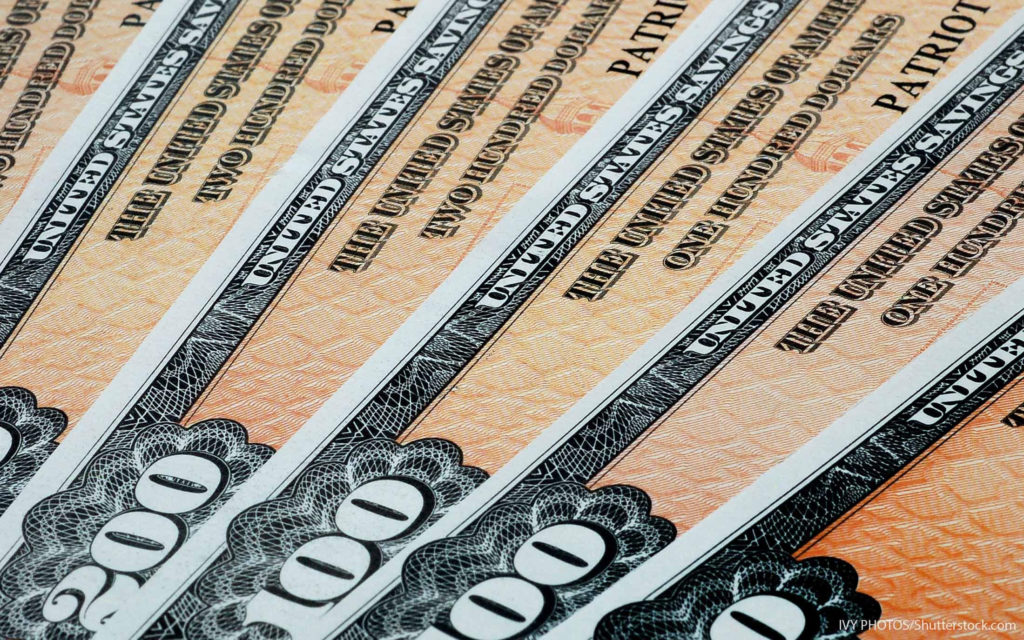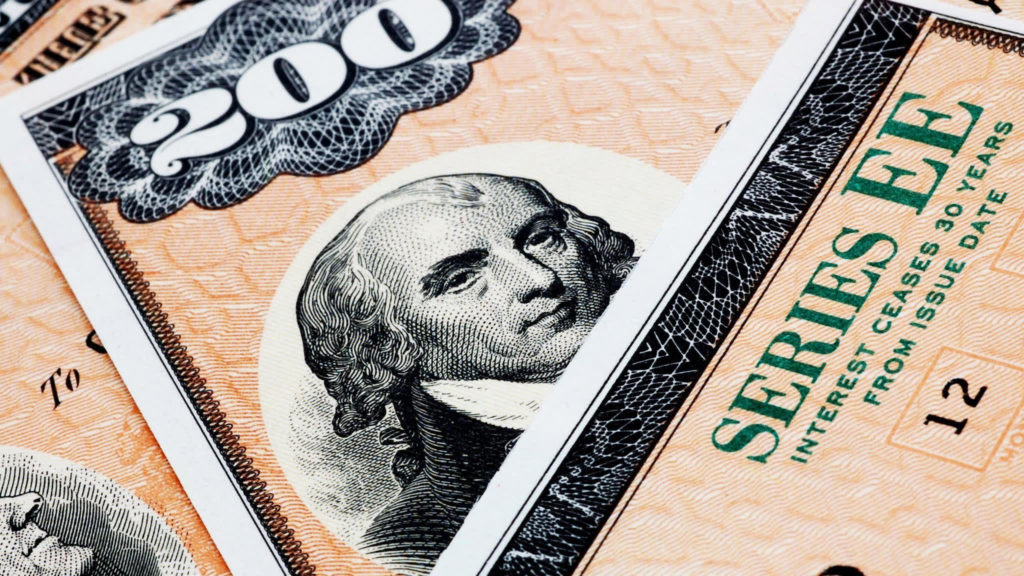
Recently, we covered the various different types of stocks and the various different types of investments you can have. This got me thinking, what are the different types of bonds you could invest in?
Whilst there are several different reasons why you should and should not invest in bonds, we are putting that aside for now.
Thanks to popular media, you are probably aware a few different types of bonds, however, there are several more you probably aren’t aware of!
15. Municipal Bonds
Occasionally, municipal governments need to raise capital quickly. Whilst they are funded by local taxes and by the state (who in turn get it from the federal government) it often isn’t enough to cover all their costs.
As such, they issue perhaps one of the most famous types of bonds, the municipal bond, commonly known as “munis” in the bond investor world. The finance raised from these bonds often go on to fund public works.
Due to their nature, the overwhelming majority of municipal bonds’ coupons (interest payments) are exempt from local, state and federal income taxes.
Municipal bonds can be acquired in one of two ways: buying them directly from the issuing entity, or on the open market. Both ways are considered fairly easy ways to buy bonds.
14. State Bonds
Sometimes, the entire state needs to finance things, whether they are new welfare programs, economic subsidies or whatever! Depending on what country you are from, the name can refer to two different types on bonds.
In most places, a state bond is any bond issued by the central government, most commonly, the country’s central bank. For example, a bond issued by the French government.
However, in the US, a state bond usually refers to a bond issued by a state (eg. Texas, Nevada, Colorado etc.) With that being said, many countries with strong US ties, have both types of state bonds- both regional and central.
As a general rule, both types of bonds are tax-free or are tax deductible (for the financial year you buy the bond). However, most central government-issued bonds pay higher coupons than municipal ones.
13. Corporate Bonds
It isn’t just local municipalities and states who issue bonds, but corporations too, both big and small. These corporations often issue bonds in order to raise finance for a project.
For example, US aircraft manufacturer Boeing may issue corporate bonds in order to finance the development of a new airliner. Or, the local farm may do the same in order to finance a takeover of another farm.
Generally speaking, corporate bonds have higher coupons than municipal or state bonds. However, these bonds are usually taxed, whilst municipal and state bonds are not.
Many of foreign corporations will also turn to places like the United States and United Kingdom to float their bonds. These are often in US Dollars or British Pounds, and are then converted into the local currency.
12. High-Yield Bonds
For the most part, the aforementioned three are among the safest types of investments you could have, especially if you buy them from S&P/Moody’s rated borrowers.
However, these generally have lower returns as they are seen as being a safer place to put your money. If you want to earn a little more money on the other hand, you could try buying high-yield bonds.
Generally speaking, high-yield bonds have incredibly high annual yields, often more than 10%, with many being closer to 15% or even 20%. This is because they are seen as a higher risk.
Sometimes, this risk is due to the management’s past, whilst it is occasionally down to the size or relative obscurity of the issuing entity. Commonly, these are corporations, however, it is occasionally countries too, such as Zimbabwe.
11. Low-Yield Bonds

On the other end of the spectrum, municipal, state and most corporate bonds can be seen as low-yield bonds. This is due to their inherently perceived security over other types of bonds.
Due to their sheer size, most bond investors believe that it is incredibly unlikely that they’ll go under any time soon. However, places like Detroit have proven this sentiment wrong.
As a result of this sentiment, there is no reason for municipal and state governments, nor for major global corporations to offer high interest payments to entice people to buy their bonds.
So they don’t offer these high interest payments, thus giving them low(er) yields. Therefore, they are known as low-yield bonds, as their yields are comparably lower than other types of bonds.
10. Investment-Grade Bonds
As we’ve demonstrated, there are several different types of bonds, some of which are safer investments, whilst others are more risky. Those bonds which are deemed to be safe and good quality are known as investment-grade bonds.
For the most part, investment grade bonds can be any type of bond that is safe and brings in a sustainable amount of interest per year. This is usually dependent on the credit score of the issuing entity.
Credit agencies such as Moody’s and S&P grade all types of investments by risk, with AAA (Aa1) being the best (although, very few bonds are considered an AAA in practice!) and CCC (Caa3) being the worst.
Generally, investment-grade bonds are seen as any bonds graded as Baa (by Moody’s) or BBB (by S&P) or above. This is regardless of what other types of bonds they are.
9. Revenue Bonds
Revenue bonds are a type of municipal bond, are are regularly sold alongside other types of municipal bonds. However, they are very different from regular municipal bonds in one way: what they fund.
Whilst municipal bonds can be used to fund almost anything, revenue bonds are issued to fund work on a public works that generate revenue. For example, a toll road, toll bridge or sports stadium.
The value of the bond is backed on the value of the public work that is being built/improved. The interest payments for the bond are generated based on the revenue brought in from the public service.
As a rule of thumb, revenue bonds tend to be a little pricier than other types of bonds. However, often bring in a higher yield than these other types of bonds as well!
8. Conduit Bonds
Both conduit and revenue bonds are extremely similar, with many investors often getting them confused, or believing that they are the same thing entirely. It also doesn’t help things when bond issues get them confused as well!
As with revenue bonds, conduit bonds are a type of municipal bond also used to fund revenue-producing public works such as toll roads, toll bridges and sports stadiums.
However, where they differ from regular revenue bonds is how their finances are managed. With revenue bonds, all revenue goes to the local government, and is then paid out to bond investors annually.
With conduit bonds, however, the revenue goes to a separate bank account, still owned by the local government. Government officials have no access to this account, so often, conduit bonds are seen as safer investments.
7. Mortgage-Backed Bonds
The vast majority of bonds have no real value. The bonds aren’t backed in anything physical like gold and silver. As such, if the issuing entity goes out of business, you risk losing your entire investment.
In recent years, governments around the world have written laws to try to combat this, however, every law has its weak points. And bad eggs do occasionally slip through, often followed by a media storm of controversy.
To combat this, the mortgage-backed bond was created. Essentially, the issuing entity buys a real estate portfolio (which is then rented out for a profit each month).
The rent is then used to pay the coupon set on the bond. Due to it being real estate-backed, and the nature of rent payments, the coupon may be paid monthly, quarterly, or semi-annually, rather than annually.
6. Convertible Bonds

As a bond investor, you’ll often find that you do indeed really like a company who’s bonds you own. As such, you might even consider buying some shares in them too.
However, not all bond investors have the financial means to buy the company’s stock, whilst also owning bonds in the company as well. As such, a convertible bond was designed to address that issue.
Essentially a convertible bond is a regular corporate bond. However, when/if you want/need to convert the bond into a stock, you simply ring the issuing entity and tell them.
Soon, your bonds will be turned into shares in the company. This can also be undone at the behest of the bond, turned-stock holder. However, if converted into a stock, the stock won’t run out at the end of the bond’s maturity.
*Unless it was converted back into a bond anyway.
5. Non-Convertible Bonds
With that being said, many corporations don’t want this to happen. They’d rather that you sold the bonds on the open market and/or cashed them in, and used the money from the sale to buy shares in them.
Mostly, this is for cost-saving reasons and for simplicity’s sake, as these types of bonds are expensive to issue, and difficult to deal with. As such, most corporations issue non-convertible bonds.
Essentially, these are just standard corporate bonds, that don’t have the official ability to be converted into equity. Although, many large corporation’s, especially those in the finance industry allow their bonds to act like convertible bonds.
Due to the increased simplicity of the bond(s), they are much cheaper to issue, and therefore to buy. On top of this, they generally pay more interest per year than their convertible counterparts.
4. Adjustment Bonds
Adjustments bonds are one of the strangest types of bonds to get your head around. This is because many bond investors won’t touch them, whilst others “specialize” in buying them, and have made hefty profits doing so.
This is because adjustments bonds are a type of corporate bond, issued by a newly recapitalized corporation.
Each year, hundreds of corporations, both big and small go through financial difficulties. Occasionally, this results in them filing for bankruptcy protection, and/or official bankruptcy.
When they do so, most other bonds are paid off, as they are a type of debt. However, the corporation may survive bankruptcy proceedings and have the need to recapitalize itself, including issuing new bonds.
These bonds are known as adjustment bonds, and are usually seen as higher risk bonds. However, they generally only pay interest payments slightly above other corporate bonds.
3. Bearer Bonds
In recent years, bearer bonds have become rather famous, mostly through their appearances in popular movies and TV. However, they don’t really act like the movies say they do…
Often, they are portrayed more like a stock certificate. As in, whoever owns the bearer bonds, owns shares in the company they were issued by. This is simply not the case in real life.
Instead, the bonds are like most other types of bonds: they are a type of debt issued by a company. However, where they differ, is the fact that they have no title on the bond, there are no names attached to them.
This means that whoever has the bonds in their possession is seen as the rightful owner, even if they were stolen, as no records are kept pertaining to ownership. Perhaps the most famous type of bearer bond is Japan’s Samurai Bonds.
2. US Treasury Bonds
The US Treasury is responsible for all the finances of the United States. This role includes acting somewhat like a central bank (although the Fed is technically the central bank).
In this role, the US Treasury is responsible for the minting of all coins and banknotes. It is also responsible for issuing and printing all federally-issued US bonds, collectively known as US Treasury Bonds.
For the most part, US Treasury Bonds are cheap (at least compared to other countries) as they start at as little as $100, and go up in $100 increments. The bonds are usually issued as 20 or 30 year maturity bonds.
Generally speaking, the US Treasury sets a variable coupon rate, which it chooses each new financial year. Luckily, the coupon of US Treasury Bonds are not subject to local or state level taxes. However, they are subject to federal taxes.
1. Non-US Bonds

The US isn’t the only country who issue bonds, be it corporate or government. In fact, it is a staple of global finance, having originally originated outside of the US, before becoming quite popular.
For the most part, non-US bonds fit into other bond categories mentioned before in this article. However, what makes them different is that it isn’t a US-based entity that issues the bond, it’s a foreign one.
Depending on who issues the bond, you may be able to get the bond coupons to be paid to you directly in Dollars. However, often, it will be in whatever the currency is in the country of the issuing entity.
For example, a coporate bond issued by the UK’s BAE Systems, a Canadian Victory bond from WWII and a Spanish Government 10-Year bond with a 5% yield, are all examples of non-US bonds.
Which types of bonds have you bought before? Tell me in the comments!
*Please don’t go out and buy any bonds mentioned in this article just because I used them as examples. They are only examples. Buy them at your own risk.


